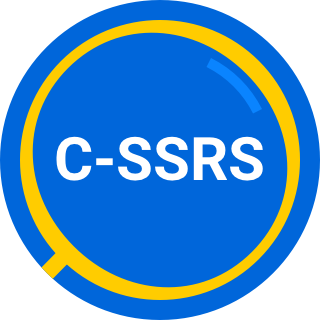If the client's answers indicate IMMINENT risk, STAY WITH THEM until they can be evaluated.
DO I NEED TRAINING TO USE IT?
No technical training is required unless you are using the Columbia Protocol for research.
IS SUICIDE REALLY PREVENTABLE?
Yes. Most people are suicidal for only a short time, so helping someone through a suicidal crisis can be lifesaving. Multiple studies have found that more than 90% of people who have made the most serious suicide attempts do not die by suicide. When people are suffering, they want help.
DOES ASKING PEOPLE ABOUT SUICIDE PUT THE IDEA INTO THEIR HEADS?
No, and for people who are considering suicide it can actually be a relief to talk about it. A seminal study by one of the Columbia Protocol developers — published in 2005 in the Journal of the American Medical Association — found that if you ask high school students about suicide, it doesn’t cause them to become suicidal or even distressed. For depressed students, asking the questions actually lowered their distress.
A review of all 13 research papers on this issue that were published from 2001 to 2014 found that none showed a statistically significant increase in suicidal ideation. According to the resulting report, “Our findings suggest acknowledging and talking about suicide may in fact reduce, rather than increase suicidal ideation, and may lead to improvements in mental health in treatment-seeking populations.”
IF SOMEONE INTENDED TO ATTEMPT SUICIDE, WHY WOULD THAT PERSON TELL YOU?
Real-world experience shows that many people with suicidal thoughts will tell someone about thoughts of suicide when asked — and they consider it a relief to talk about it. Even if they won’t tell a clinician or counselor, many people drop hints or give warnings to friends and family, because almost everyone considering suicide is ambivalent about dying. This characteristic ambivalence can make people who are thinking about suicide more willing to discuss their thoughts.
HOW CAN ASKING THE COLUMBIA PROTOCOL QUESTIONS HELP ME ALLOCATE MY AVAILABLE RESOURCES?
Experience and research show that the Columbia Protocol helps redirect resources to use them more efficiently. That’s because the use of the Columbia Protocol reduces “false positives” — that is, incorrectly identifying someone as at risk for suicide — even as it detects at-risk individuals who would otherwise have been missed.
When the protocol does identify people who are at risk, it helps healthcare workers, first responders, and other gatekeepers direct them to the appropriate level of care, such as counseling. Sometimes hospitalization is required, but it’s rare: Our experience with the Columbia Protocol consistently shows that 1 to 2% of people screened with the protocol require more acute care — even among high-risk populations such as people with depression and veterans with a psychiatric diagnosis.


